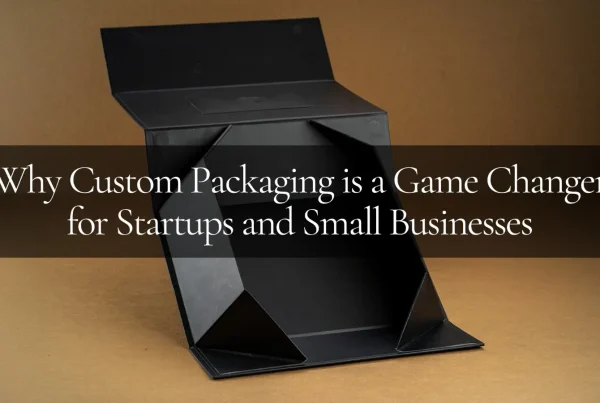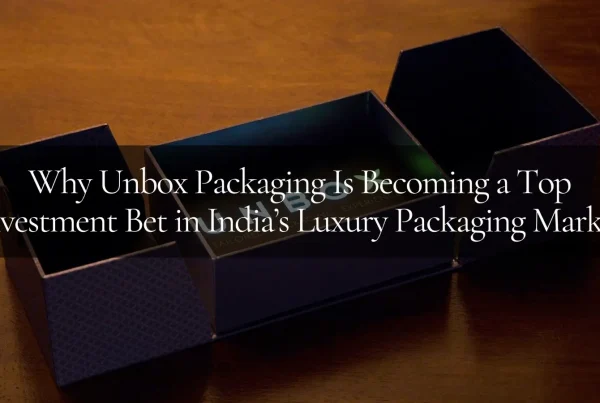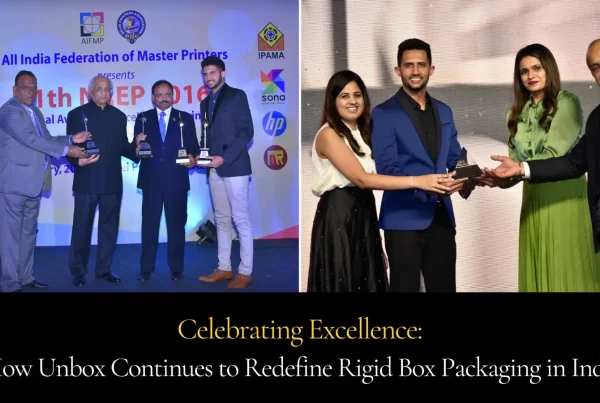In today’s highly competitive market, it is crucial for brands to differentiate themselves and connect with their target audience on a deeper level. One powerful tool that can help achieve this is brand storytelling. A well-crafted brand story has the ability to captivate and engage consumers, creating a strong emotional connection that goes beyond the product or service being offered. And when it comes to brand storytelling, packaging plays a significant role.
Understanding the Concept of Brand Storytelling
Brand storytelling is the art of conveying a brand’s values, personality, and unique selling proposition through a narrative. It goes beyond simply promoting products and delves into the realm of emotions, aspirations, and experiences. By using storytelling techniques, brands can create a compelling narrative that resonates with their target audience, ultimately building brand loyalty and increasing customer engagement.
The Importance of a Strong Brand Story
Having a strong brand story is crucial for several reasons. Firstly, it helps establish an emotional connection with consumers, making them feel more connected and invested in the brand. This emotional connection can lead to increased customer loyalty and repeat purchases. Secondly, a well-crafted brand story helps differentiate the brand from its competitors. In a crowded marketplace, standing out and showcasing a unique story can make all the difference in attracting and retaining customers.
How Packaging Contributes to Your Brand’s Story
Packaging is often the first touchpoint consumers have with a brand. It is the first interaction they have with a product, and it sets the tone for their entire brand experience. This is why packaging plays a crucial role in brand storytelling. The design, materials, colors, and overall aesthetics of the packaging can convey important messages about the brand’s values, personality, and story.
For example, a brand that prides itself on sustainability and eco-friendly practices may choose to use recycled materials and earthy colors in its packaging design. This not only showcases the brand’s commitment to the environment but also aligns with the values of consumers who prioritize sustainability.
Furthermore, packaging can also tell a story through its functionality. Innovative packaging solutions that enhance the user experience or solve a problem can reinforce a brand’s story by demonstrating its commitment to customer satisfaction.
Moreover, the choice of packaging materials can also contribute to the brand’s story. For instance, a luxury brand may opt for high-quality materials such as velvet-lined boxes or satin ribbons to create a sense of elegance and exclusivity. This attention to detail in packaging not only enhances the overall brand experience but also reinforces the brand’s story of luxury and sophistication.
In addition to materials, the design elements on the packaging can also play a significant role in brand storytelling. Intricate patterns, unique illustrations, or even a clever play on the brand’s logo can create a visual narrative that captures the essence of the brand. These design choices can evoke certain emotions or convey specific messages that align with the brand’s story, further enhancing the overall brand experience.
Overall, packaging is a powerful tool that brands can leverage to tell their story and connect with consumers on a deeper level. By carefully considering the design, materials, and functionality of packaging, brands can create a cohesive brand experience that leaves a lasting impression and fosters strong brand loyalty.
The Power of Custom Packaging
While standard packaging serves its purpose, custom packaging takes brand storytelling to the next level. Custom packaging allows brands to create a unique and memorable experience for their customers.
Custom packaging not only serves as a vessel for the product but also as a canvas for creativity. Brands can use custom packaging to tell a story, evoke emotions, and leave a lasting impression on consumers. From innovative shapes to interactive elements, the possibilities for custom packaging are endless, allowing brands to stand out in a crowded market.
The Impact of Personalization in Packaging
Personalization is a growing trend in marketing, and it has found its way into packaging as well. Customizable packaging not only grabs the attention of consumers but also creates a sense of exclusivity and personal connection. By allowing customers to customize their packaging, brands can make them feel special and valued, further strengthening the emotional bond with the brand.
Personalized packaging can also enhance the unboxing experience, turning a mundane task into a moment of delight. Whether it’s adding a customer’s name, a personalized message, or incorporating interactive features, personalized packaging creates a sense of anticipation and excitement, making the unboxing process a memorable part of the overall brand experience.
The Connection Between Packaging Design and Brand Identity
Packaging design goes beyond aesthetics; it is also a reflection of a brand’s identity. The design elements used in packaging, such as logos, typography, and color schemes, should align with the brand’s overall visual identity. Consistency in design across all touchpoints, including packaging, helps reinforce the brand’s story and enhances brand recognition.
Furthermore, packaging design plays a crucial role in communicating brand values and positioning in the market. Whether a brand aims to convey luxury, sustainability, or playfulness, the packaging design can visually communicate these attributes to consumers at a glance. The design choices, materials used, and finishing touches all contribute to shaping consumers’ perceptions of the brand and influencing their purchasing decisions.
The Role of Packaging in Brand Perception
Packaging plays a significant role in shaping consumer perception of a brand. It is often the first impression consumers have of a product, and it can heavily influence their perception of the brand as a whole.
When a consumer walks down the aisle of a store or scrolls through an online shop, the packaging is what initially catches their eye. The colors, fonts, and imagery on the packaging all work together to communicate the brand’s identity and values. A well-designed package can evoke emotions and create a connection with the consumer before they even try the product inside.
How Packaging Influences Consumer Perception
The design, quality, and overall presentation of the packaging can shape how consumers perceive the product and the brand behind it. High-quality packaging conveys a sense of value and premiumness, while poorly designed or cheap-looking packaging can create a negative perception of the brand’s quality.
Furthermore, packaging can also influence perceptions of sustainability and eco-friendliness. Consumers are increasingly conscious of the environmental impact of packaging materials. Brands that use recyclable or biodegradable materials in their packaging not only appeal to environmentally conscious consumers but also showcase their commitment to sustainability.
The Role of Packaging in Creating a Brand Experience
Packaging can be seen as an extension of the brand experience. It has the power to create anticipation, excitement, and even surprise. Brands can use packaging to design an unboxing experience that delights and engages customers, turning a mundane act into a memorable moment. By creating a positive brand experience through packaging, brands can leave a lasting impression on consumers and enhance their overall perception of the brand.
Moreover, packaging can also serve as a storytelling tool for brands. Through the design elements and messaging on the packaging, brands can communicate their history, values, and unique selling points. This storytelling aspect not only differentiates the brand from competitors but also creates a deeper connection with consumers who resonate with the brand’s narrative.
Strategies for Effective Brand Storytelling Through Packaging
Implementing an effective brand storytelling strategy through packaging requires careful planning and consideration. Here are some strategies to help brands leverage the power of packaging in their storytelling efforts:
Aligning Your Packaging Design with Your Brand Story
The packaging design should be a visual representation of the brand’s story and values. It should evoke the emotions and associations that the brand wants to convey. By aligning the packaging design with the brand story, brands can create a cohesive and immersive brand experience.
When designing packaging that aligns with the brand story, it’s essential to consider every element, from color choices to typography. Each aspect should reflect the brand’s personality and resonate with its target audience. For example, a luxury brand may opt for sleek, minimalist packaging to convey sophistication, while a playful brand might use bright colors and whimsical illustrations to appeal to a younger demographic.
Utilizing Packaging to Communicate Your Brand Values
Packaging can be used as a medium to communicate a brand’s values and social responsibility. For example, brands can use sustainable packaging materials to showcase their commitment to the environment or include messages that support a cause they care about. By doing so, brands can connect with like-minded consumers who share their values.
In addition to using packaging materials that reflect brand values, brands can also incorporate storytelling elements directly on the packaging. This could include sharing the brand’s origin story, highlighting the craftsmanship behind the product, or featuring testimonials from satisfied customers. Such narratives not only add depth to the brand but also create a sense of authenticity that resonates with consumers seeking genuine connections with the products they purchase.
Measuring the Success of Your Packaging Strategy
Like any marketing strategy, measuring the success of your packaging storytelling efforts is essential to ensure its effectiveness and make necessary adjustments. Here are some key indicators to consider:
Monitoring customer feedback and reviews can provide insight into how well your packaging is resonating with your target audience. By paying attention to what customers are saying about your packaging, you can understand whether it is effectively communicating your brand’s story and values. Positive feedback and glowing reviews indicate that your packaging is making a strong impact and connecting with consumers on an emotional level.
Additionally, conducting surveys or focus groups to gather consumer perceptions and associations with your packaging can help gauge its effectiveness in conveying your brand’s story. These research methods allow you to delve deeper into the minds of your target audience, understanding how they perceive your packaging and whether it aligns with the narrative you are trying to create. By actively seeking feedback from consumers, you can gain valuable insights that will guide you in refining your packaging strategy.
The Future of Custom Packaging in Brand Storytelling
As brands continue to seek innovative ways to connect with their audience, custom packaging will undoubtedly play a crucial role in brand storytelling. The possibilities for creating unique and immersive brand experiences through packaging are only limited by imagination. Brands that embrace custom packaging and use it to tell their story in compelling ways will have a distinct advantage in capturing the hearts and minds of consumers.
Imagine a package that not only contains a product but also unfolds into an interactive storybook, engaging customers with every turn of the page. Or picture a package that incorporates augmented reality, allowing consumers to unlock hidden content and dive deeper into the brand’s narrative. These are just a couple of examples of how custom packaging can elevate brand storytelling to new heights.
Furthermore, custom packaging provides an opportunity for brands to showcase their commitment to sustainability and eco-consciousness. By using recyclable materials, implementing eco-friendly production processes, and designing packaging that can be repurposed, brands can align their storytelling efforts with the growing demand for environmentally responsible practices. This not only enhances the brand’s image but also resonates with consumers who prioritize sustainability.
In conclusion, brand storytelling is a powerful tool for building a strong emotional connection with consumers. Custom packaging acts as a vehicle for conveying a brand’s story, values, and personality. By aligning packaging design with brand identity, utilizing personalization, and creating positive brand experiences, brands can effectively tell their story and enhance consumer perception. The future of custom packaging in brand storytelling is bright, offering endless opportunities for brands to leave a lasting impression on their audience.




